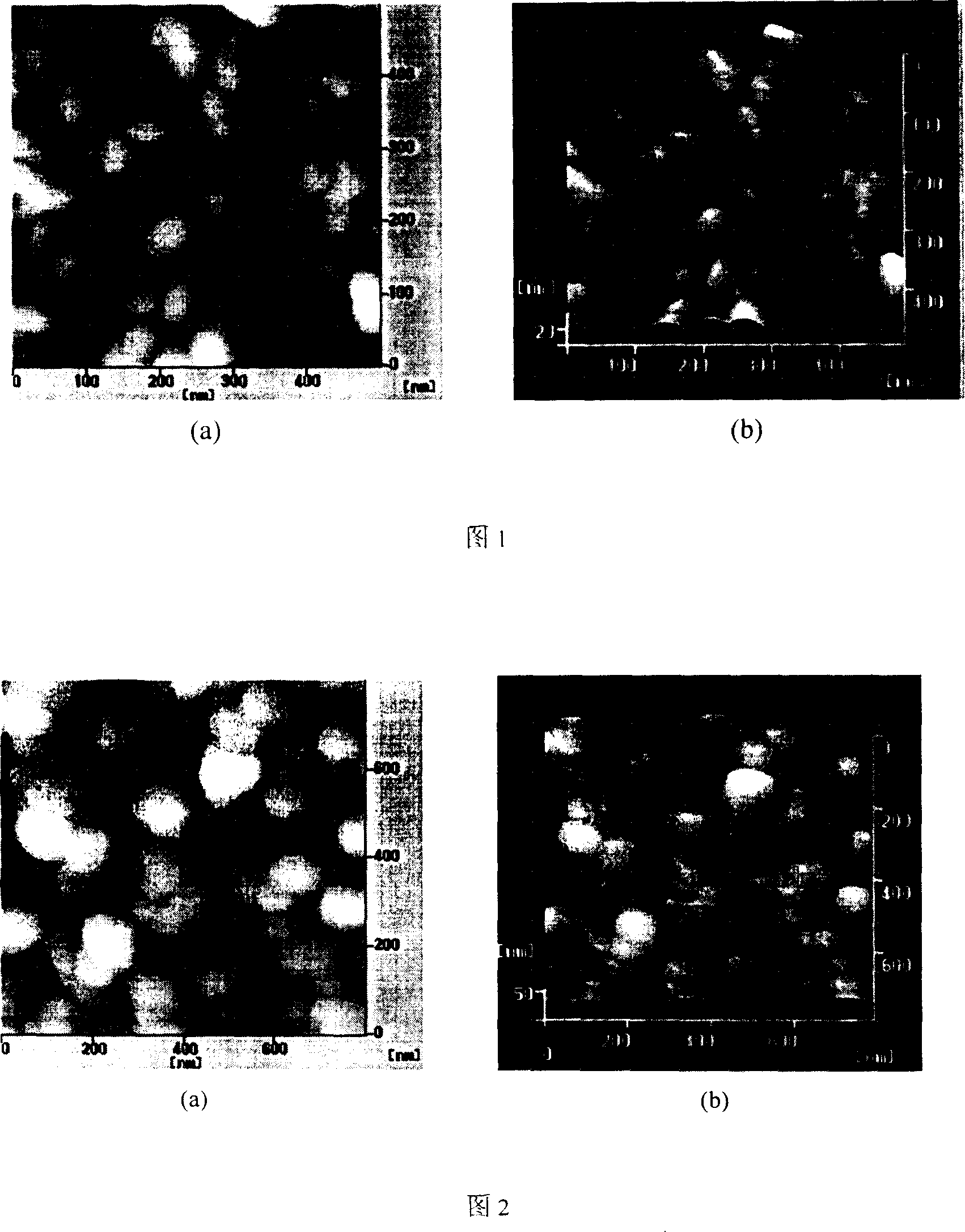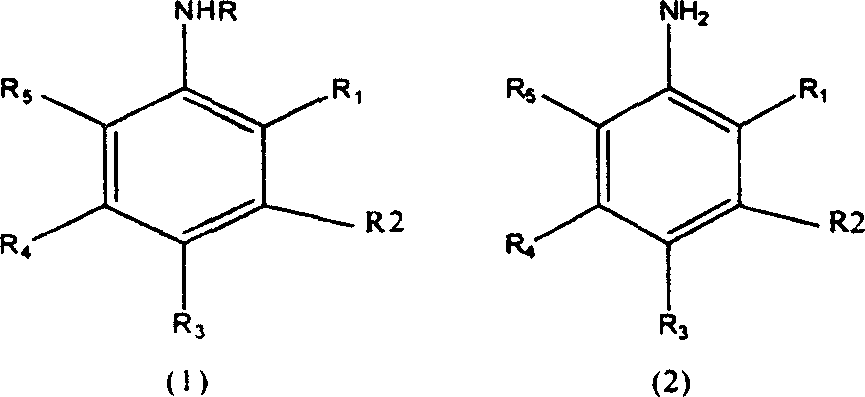Method for preparing polyaniline without emulsified Nano granule
A technology for nanoparticles and polyaniline, which is applied in the field of preparing polyaniline nanoparticles, can solve the problems of complex product components, difficult product purification, environmental pollution, etc., and achieves the effect of simplifying the synthesis process, simple preparation method and pure nanoparticles
- Summary
- Abstract
- Description
- Claims
- Application Information
AI Technical Summary
Problems solved by technology
Method used
Image
Examples
Embodiment 1
[0022] Weigh 2.20g of aniline-2,5-disulfonic acid and 5.60g of ammonium persulfate into 250mL and 150mL glass bottles respectively, then add 75mL and 25mL of hydrochloric acid solution with a concentration of 1.0M, stir to fully dissolve, and then Measure 1.20mL of aniline monomer into the aniline-2,5-disulfonic acid solution, stir evenly, seal the glass bottle and put it in a 25°C reaction water bath, and keep the temperature constant for more than half an hour under vigorous stirring.
[0023] Transfer the ammonium persulfate solution into a separatory funnel, and drop it into the monomer solution at a rate of 1 drop / 3 seconds to initiate polymerization. After the oxidant was added dropwise, the reaction was continued for 24 hours to complete the reaction. After the reaction was completed, a dark green polymer solution containing nano-sized particles was obtained. Pipette 2mL of the reaction solution and dilute it to 200mL with deionized water, stir evenly, let stand, preci...
Embodiment 2
[0025] Weigh 0.87g of anthranilic acid and 1.14g of ammonium persulfate into 250mL and 150mL glass bottles respectively, then add 100mL and 50mL of hydrochloric acid solution with a concentration of 1.0M and stir to fully dissolve them, then measure 0.46mL of Add the aniline monomer into the anthranilic acid solution, stir evenly, seal the glass bottle and place it in a 30°C reaction water bath, and keep the temperature constant for more than half an hour under vigorous stirring.
[0026] Transfer the ammonium persulfate solution into a separatory funnel, and drop it into the monomer solution at a rate of 1 drop / 3 seconds to initiate polymerization. After the oxidant was added dropwise, the reaction was continued for 24 hours to complete the reaction. After the reaction is completed, a dark green polymer solution containing nanoscale copolymer particles is obtained. Pipette 2mL of the reaction solution and dilute it to 200mL with deionized water, stir evenly, let stand, preci...
Embodiment 3
[0028] Weigh 2.20g of aniline-2,5-disulfonic acid and 5.60g of ammonium persulfate into 250mL and 150mL glass bottles respectively, then add 75mL and 25mL of hydrochloric acid solution with a concentration of 1.0M, stir to fully dissolve, and then Measure 1.20mL of aniline monomer into the aniline-2,5-disulfonic acid solution, stir evenly, seal the glass bottle and place it in a 45°C reaction water bath, and keep the temperature constant for more than half an hour under vigorous stirring.
[0029] Transfer the ammonium persulfate solution into a separatory funnel, and drop it into the monomer solution at a rate of 1 drop / 3 seconds to initiate polymerization. After the oxidant was added dropwise, the reaction was continued for 24 hours to complete the reaction. After the reaction is completed, a dark green polymer solution containing nanoscale copolymer particles is obtained. , get the sample with the method in embodiment 2 and do particle size test, the particle average parti...
PUM
| Property | Measurement | Unit |
|---|---|---|
| Conductivity | aaaaa | aaaaa |
| The average particle size | aaaaa | aaaaa |
| Conductivity | aaaaa | aaaaa |
Abstract
Description
Claims
Application Information
 Login to View More
Login to View More - R&D
- Intellectual Property
- Life Sciences
- Materials
- Tech Scout
- Unparalleled Data Quality
- Higher Quality Content
- 60% Fewer Hallucinations
Browse by: Latest US Patents, China's latest patents, Technical Efficacy Thesaurus, Application Domain, Technology Topic, Popular Technical Reports.
© 2025 PatSnap. All rights reserved.Legal|Privacy policy|Modern Slavery Act Transparency Statement|Sitemap|About US| Contact US: help@patsnap.com



